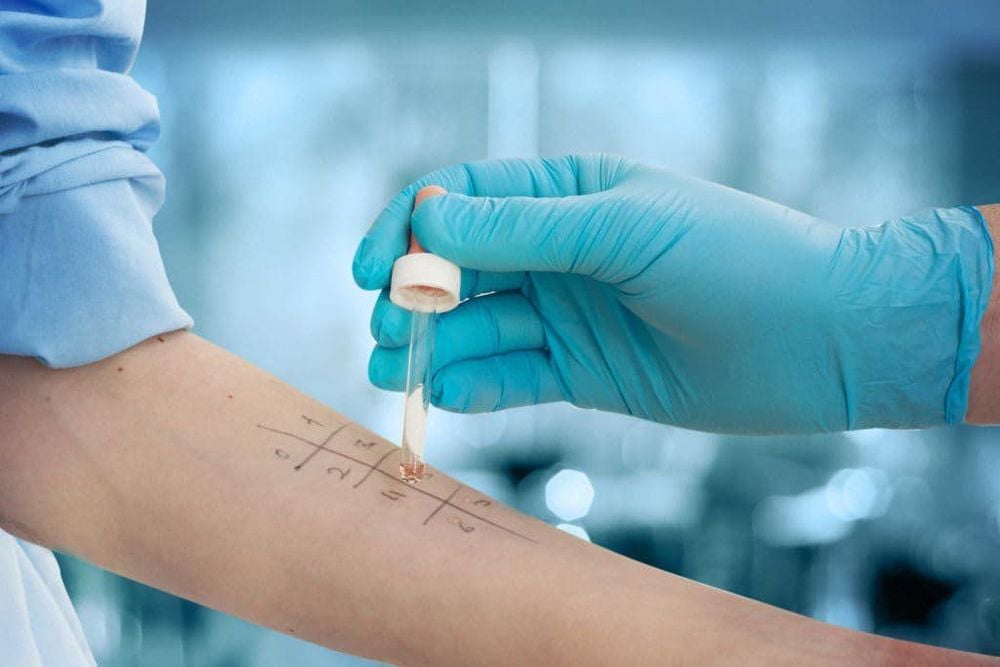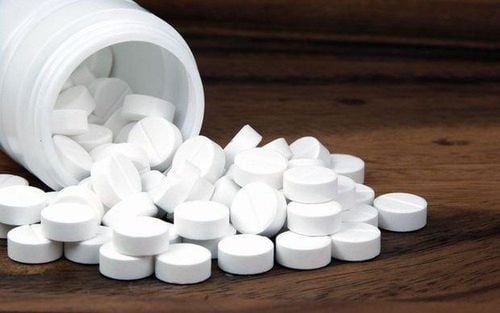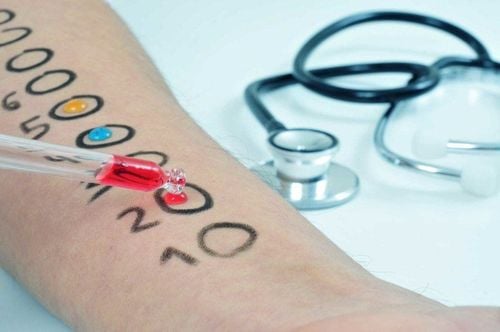This is an automatically translated article.
Allergic desensitization plays an important role in medicine, making it possible for patients to use drugs that have been allergic before. However, this method is only temporarily valid, so when it is necessary to reuse the same sensitizing drug, this method must be repeated.
1. Causes and symptoms of drug allergy
According to many studies, there is a close relationship between genetic factors and allergies. This explains why many people in the family often have allergies to the same foods, medications, or diseases such as allergic rhinitis, sinusitis and asthma...
Common food allergies , drugs, insect stings, allergic immunotherapy. Symptoms of an allergy are varied and often appear on the skin. Symptoms include:
The body will appear red bumpy patches on the skin, called urticaria, causing a lot of itching and may be accompanied by swelling in the rash area. These symptoms are usually mild and resolve on their own after discontinuation of the drug. However, there are a few severe cases that can cause Stevens Johnson syndrome and Lyell syndrome, which are two very serious conditions with a high risk of death. Anaphylactic shock: Acute, severe, multi-organic allergic reaction that can be life-threatening.
2. What is the desensitization method?
Desensitization is a popular method today in the field of allergology, applied in many countries around the world. The purpose of the method is to gradually make the patient familiar with the agent or drug to which they are allergic. This process of adaptation takes time and from there the patient's body will develop a tolerance to that drug.
The most commonly used method of desensitization in the treatment of allergies today is the rapid desensitization method.

Giảm mẫn cảm dị ứng đóng một vai trò quan trọng trong y học
3. Method of rapid desensitization in allergy treatment
The method of rapid desensitization will use the same allergen to treat the patient. However, these drugs will be used initially for a very small period of time just enough to cause subclinical anaphylaxis (no clinical manifestations), then gradually increase until the therapeutic dose is reached, the time to increase the dose. about 15-20 minutes. Treatment time is a few hours or even a few days depending on the patient's location.
The purpose of this method is to help patients go from being allergic (hypersensitivity) to a certain drug to a state where they can tolerate and use the drug without causing harm to the body.
Initially, this method was only applied to cases of penicillin allergy, then expanded to other drug groups and biological products such as Vancomycin, Allopurinol, Acyclovir, Trimethoprim - Sulfamethoxazol, Sulfasalazine , Aspirin, Insulin, tetanus vaccine and some antisera.
IgE is an antibody that plays a decisive role in the mechanism of allergy. Therefore, the desensitization method will gradually neutralize IgE antibodies, and at the same time stimulate the body to produce IgG4 antibodies to help surround antigens, inhibiting the release of allergen mediators.
4. How to perform rapid desensitization
Rapid desensitization treatment can be used through medicinal preparations placed under the tongue, oral, intravenous or subcutaneous. In which, the most common are the preparations in the form of sublingual or oral because they are safer, the effects are slower, so there is enough time to monitor and handle if there are side effects.
How to do it:
Skin test before proceeding with desensitization to find the starting dose - the maximum dose that the patient can tolerate without causing clinical symptoms. The amount of drug used for the test is usually equal to or less than 1/10000 of the therapeutic dose. Use the starting dose, observe for 15-20 minutes. If the patient does not have allergic manifestations such as itching, urticaria, then double the dose of the drug. Repeat the above procedure until enough treatment is achieved for the patient.
5. Side effects of rapid desensitization
Rapid desensitization method is highly effective in treatment and relatively safe. However, while taking the drug, there are a few side effects to note such as:
During treatment, there may be slight itching, small papules on the skin, in some cases. After a week of treatment, there may be mild fever, urticarial rash and itching. Dangerous, life-threatening reactions include: bronchospasm causing respiratory failure, anaphylaxis.

Phương pháp giải mẫn cảm nhanh sẽ dùng chính thuốc gây dị ứng để điều trị cho bệnh nhân
6. Precautions when using rapid desensitization
When using the rapid desensitization method, it should be noted:
Limit use in the elderly, people with chronic diseases such as cardiovascular disease, chronic kidney disease, people with autoimmune diseases, patients are taking β-blockers. Need specialists with experience in the management of anaphylaxis; performed at the hospital to have enough tools and drugs for emergency and anaphylaxis treatment. It is necessary to closely monitor the patient during treatment in terms of pulse, temperature, blood pressure, and consciousness for timely detection and treatment. Establish an intravenous line for adrenaline injection as soon as anaphylaxis occurs. This method cannot treat subacute or chronic allergic diseases such as autoimmune hemolytic anemia, Stevens - Johnson syndrome, Lyell syndrome, autoimmune glomerulonephritis... This method has a temporary value, so when it is necessary to reuse the same sensitizing drug, this method must be repeated.
Please dial HOTLINE for more information or register for an appointment HERE. Download MyVinmec app to make appointments faster and to manage your bookings easily.
References: msdmanuals.com, microbiologybook.org.












